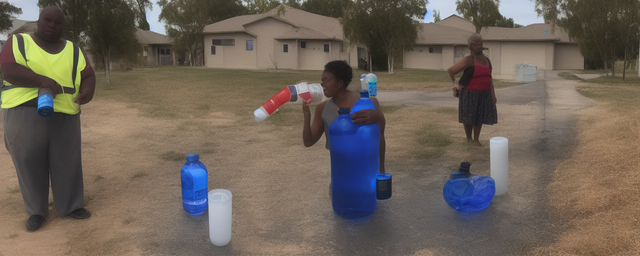
小区直饮水的危害
原|2024-04-25 16:41:48|浏览:57
Direct drinking water in residential areas can pose several risks and hazards to the health of individuals. Here are some of the potential dangers associated with direct drinking water in residential areas:
1. **Contamination**: Direct drinking water systems in residential areas may be susceptible to contamination from various sources such as bacteria, viruses, chemicals, and heavy metals. Contaminated water can lead to a range of health issues including gastrointestinal problems, skin rashes, and even long-term health effects.
2. **Lack of Regulation**: Unlike public water systems that are regulated by authorities, direct drinking water systems in residential areas may not be subject to the same level of oversight. This lack of regulation can result in inconsistent water quality and inadequate monitoring of potential contaminants.
3. **Pipe Corrosion**: Older residential buildings may have aging plumbing systems that are prone to corrosion. Corroded pipes can leach harmful substances into the water supply, compromising its quality and safety for consumption.
4. **Microbial Growth**: Stagnant water in direct drinking systems can promote the growth of harmful microbes such as bacteria, algae, and mold. Consuming water contaminated with these microorganisms can lead to infections and other health complications.
5. **Lead Exposure**: Lead pipes or fixtures in residential plumbing systems can contaminate drinking water with lead particles. Prolonged exposure to lead through drinking water can have serious health consequences, especially for children and pregnant women.
6. **Inadequate Filtration**: Direct drinking water systems may lack proper filtration mechanisms to remove impurities and contaminants effectively. Without adequate filtration, individuals may be exposed to pollutants and toxins present in the water supply.
7. **Risk of Cross-Contamination**: In residential areas where direct drinking water systems are shared among multiple households, there is a risk of cross-contamination between different units. This can introduce new contaminants into the water supply and compromise its safety.
In conclusion, while direct drinking water systems in residential areas may offer convenience, they also come with inherent risks to health and safety. It is essential for residents to be aware of these potential hazards and take necessary precautions to ensure the quality and purity of their drinking water. Regular testing, maintenance of plumbing systems, and installation of appropriate filtration devices can help mitigate the risks associated with direct drinking water in residential settings.
猜你喜欢
- 茶的分类及代表品种
- 六大茶类的代表名茶分别有
- 茶的类型和代表
- 六大茶叶的分类及产地
- 庙的分类及代表
- 藻的分类及其代表
- 茶的分类及代表茶品特点
- 茶的分类及代表茶
- 简述茶类的分类及其代表性名茶
- 六大茶类的分类及代表茶
- 动物分类及代表
- 糖的分类及代表
- 茶的分类及代表茶叶
- 茶的分类及代表图
- 茶的分类及代表作
- 茶器按质地的分类及代表茶器
- 茶的分类及代表名茶教学设计
- 简述茶的分类及代表性名茶
- 请写出乌龙茶的分类及代表茶
- 法国雅文邑白兰地系列
- 雅文邑白兰地介绍
- 1952年法国雅文邑白兰地
- 法国雅玛邑白兰地
- 纽波利顿獒
- 法国犬品种
- 南非獒犬的优缺点
- 波尔多獒犬寿命
- 波兰狩猎犬
- 波尔多犬和罗威纳犬对比
- 波尔多犬和杜高对比
- 世界十大凶犬
- 护卫犬排行榜前十名
- 大红袍怎么泡效果好
- 大红袍怎么泡不开
- 大红袍怎么泡茶
- 大红袍怎么泡出来没颜色
- 大红袍怎么泡不苦
- 大红袍怎么泡多久
- 大红袍怎么泡才正确的特点
- 大红袍怎么泡没有柴味儿
- 大红袍怎么泡放多少合适
- 花香大红袍怎么泡
- 大红袍怎么泡茶好
- 大红袍是怎么泡的
- 大红袍怎么泡水好喝
- 大红袍用玻璃杯怎么泡
- 大红袍怎么泡味道浓一些
- 十大排名果花茶
- 十大花茶组合排名
- 十大花茶品种大全
- 十大花茶功效
- 十大花茶销量排行榜
- 十大花茶有哪些
- 十大花茶品种
- 十大花茶推荐
- 十大花卉排行榜
- 十大花卉
- 十大花茶调理内分泌
- 九五至尊秦昊明月关山
- 红茶冲泡工艺
为你推荐






































































